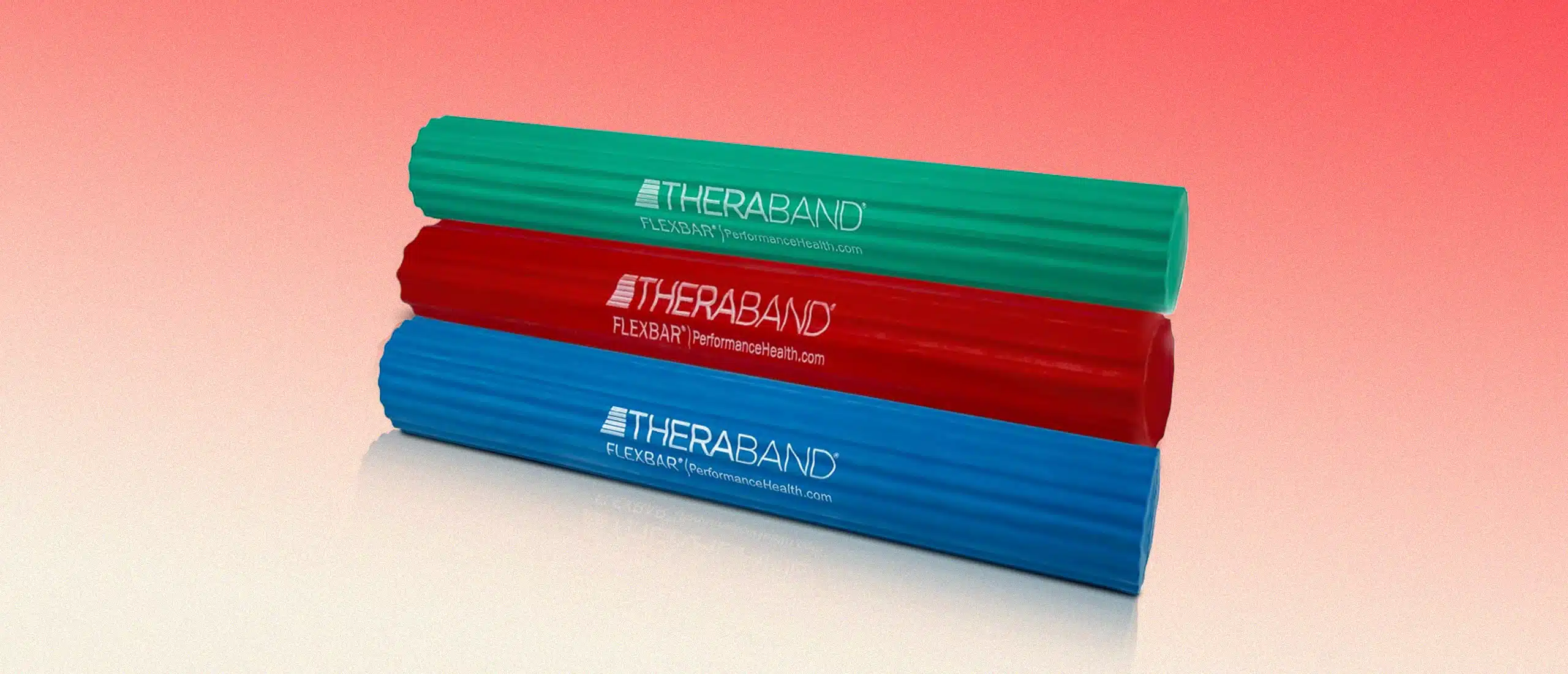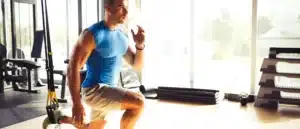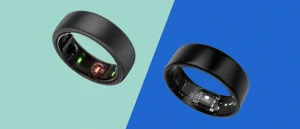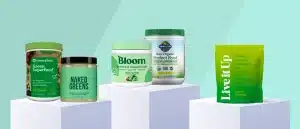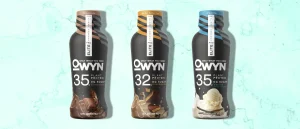Play Golf or Tennis? The $15 Theraband FlexBar Can Save You a Lot of Pain
My elbows have been tight since the late 1990s when I first borrowed my dad’s tennis racket for a lesson on my neighborhood courts. Put plainly, this is a reality for a huge percentage of tennis players, because our wrists are not built to constantly bend back and forth to generate spin and torque. The condition’s medical name is lateral epicondylitis, but is most commonly referred to as Tennis Elbow and in all likelihood your doctor will prescribe rest to lower the inflammation. A similar but slightly different issue called Golfer’s Elbow, or medial epicondylitis, is treated similarly.
Your doctor would be correct to do so, but, if the internet is to be believed, there is another option. It’s called the Theraband FlexBar, and it costs about $15. We got ahold of one to see if something that cheap can really solve such a widespread, obnoxious issue.
This product was purchased by The Edge editors for review. We may earn commissions on reviewed products purchased through our links to retailer sites.
What Is the Theraband FlexBar?
Now more than a decade old, the FlexBar is one of many Theraband products aimed at quelling pain and strengthening hard-to-target muscle groups.
Practically, it’s a foot-long latex rubber tube with ridges cut into it for grippiness. It’s available in different rubber thickness levels, which effectively sets the intensity of the exercise (I went for the medium-intensity green FlexBar, which requires 15 pounds of force to bend into a U-shape) and you can buy it anywhere from Amazon to sites that specialize in physical therapy gear.
What Does It Do?
The purpose is to alleviate Golfer’s and Tennis Elbow, which are painful conditions developed by the overuse (and therefore inflammation) of the tendons that connect your wrist to your elbow.
The two conditions are similar but their causes and effects are slightly different, each in line with the sport that aggravates them. Tennis players constantly roll their wrists backward—away from their palms—to generate whip when stroking a ball. On its own, this motion isn’t an issue, but when repeated with enough force, the tendons on the outside of the elbow become inflamed and cause all sorts of discomfort. Golfer’s Elbow is the inverse, and the pain manifests on the inside of the elbow accordingly. The FlexBar was designed to aid in the recovery of either.
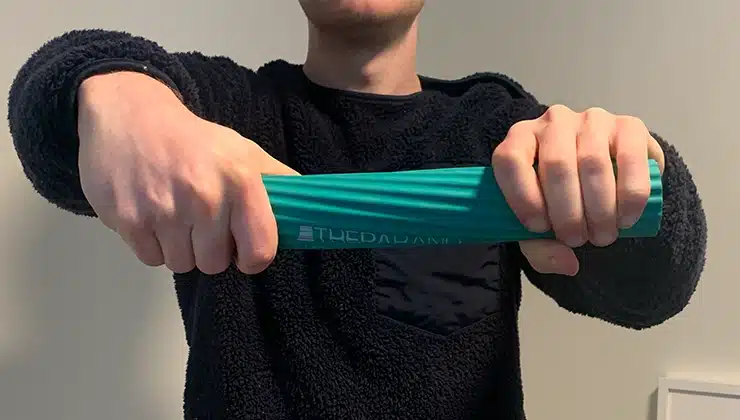
What’s Good About the Theraband FlexBar?
Feels like it “unlocks” elbows
I’ve had Tennis Elbow issues off and on for twenty years now. It is what it is. I’ve spoken to multiple primary care doctors and they’ve all suggested rest to allow the affected tendons to recover. So I rested and, sure enough, a month or so after returning to exercise—tennis, weightlifting, climbing, etc.—the discomfort would return, followed shortly by more obvious and consistent pain.
I can confidently say using the FlexBar for six weeks has done more to combat the cycle than any amount of rest or other exercises I’ve tried.
Finding a routine amounted to aggressively Googling what other people recommend. I landed on a daily routine made up primarily of Tyler Twists—hold the bar in front of you, twist it in either direction with your hands, and control the eccentric movement—as well as Reverse Tyler Twists, which is the same movement but your palms face the ceiling instead of the floor. Logging three sets of 15 reps each daily, I noticed my elbows—which constantly feel like they need to be stretched or cracked in some way—loosen up after about a month.
This “unlocked” feeling extended beyond tennis, too. I’ve been (stupidly) pushing through the elbow pain weightlifting for years as well; particularly on the bench press, where significant weight is loaded on your wrist and elbow joints.
I would not say I’m totally pain-free now, but I don’t feel sharp pains or burning sensations on my elbows after workouts like I have for years now. If that’s not worth $15, I don’t know what is.
Noticeable grip improvement
I’ve struggled with grip strength for most of my weightlifting and tennis-playing life. I’ve tried popular grip strength improvers like Farmer Carries with limited success, but my lack of grip power has severely limited heavier pulling workouts like deadlifts or barbell rows.
That’s why I was a bit surprised to find my grip feeling sturdier about a month after I started using the FlexBar. It turns out, this is by design and perhaps shouldn’t have been surprising at all. In order to work those minor muscles and tendons that are at the root of Tennis and Golfer’s Elbow, you have to squeeze the FlexBar and control it. While most of the burn is in your wrists and forearms, you’re pushing your grip strength the whole time. I wouldn’t argue the FlexBar is the best grip strength trainer, but as a helpful addition to its main purpose, it’s pretty great.
Excellent warm-up tool
As you age, you need to extend your warm-up period before exercising. I’m a big fan of movement-based stretching—or dynamic stretching—and this handy little bar is perfect for that. Whether I’m working chest, back, or arms, I put about a minute of FlexBar work into my pre-workout routine to get the blood flowing to the right places.
Fits nicely in a gym bag
There’s not much to say here apart from the obvious: portability is almost always good, especially for recovery tools, which you inherently need to take with you everywhere. It fits in a gym bag, carry-on, and really any other normal-sized bag without any issue.
What’s Not Good About the Theraband FlexBar?
Small learning curve
I’m not sure I can really call this a significant negative to the product, but I personally don’t like unintuitive things, which the FlexBar definitely is. When it comes to your health, you should be willing and able to invest some time on YouTube to get the most out of the product, but the Theraband brand doesn’t do a great job of helping you there. You have to really dig into internet-savvy physical therapists’ routines to figure out how many sets and reps of what workouts you should do for your situation, and that can be, well, time-consuming.
Not a cure-all for elbow issues
I hope this does not come as a shock, but the FlexBar and the workouts you do with it will not make your elbows bulletproof. Adequate rest will do more to manage the pain and reduce swelling than a latex rubber bar will. And it should be said that, even once your elbows do feel significantly better, you’re still very much at risk to re-aggravate the injury in doing the activities that caused it in the first place. This tool helps, but it isn’t a vaccine that eliminates all elbow pain now and in the future.
The Bottom Line
For $15, every tennis player, golfer, climber, and weight lifter that experiences consistent elbow pain should give the Theraband FlexBar a chance. The price is so low, and there is real science behind its effectiveness, so it’s a miss not to try it. Word to the wise, though: it won’t fix every elbow pain from now to infinity—you should still rest when you need to, and talk to your doctor if the pain becomes more significant.


